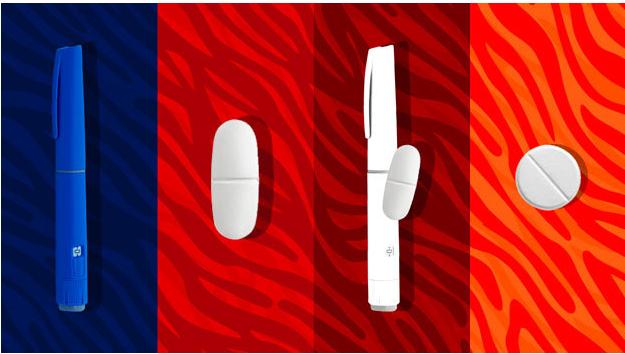The diet drug track has quickly become one of the hottest R & D areas in the pharmaceutical industry. Hot drugs in the field, such as Novo Nordisk's Wegovy and Eli Lilly's Zepbound, mean strong interest in subsequent drugs and next-generation drugs.
(Mizuho Americas), Graig Suvannavejh said there is great interest in combination therapies, and the focus remains mainly on GLP-1 based therapies. Like Lilly's triple-G therapy, which combines and activates GIP, GLP-1, and glucagon receptors.
Suvannavejh added that oral administration of these drugs is also meaningful because it can reduce the cost of current treatment by reducing production costs, which will cover more patients.
Foreign media biospace summarizes four weight-loss drugs that can change the market pattern. Although the focus of the industry has been on GIP / GLP-1 drugs for injection, there are other options for patients who do not respond to GLP-1 or cannot tolerate side effects.

Of the four drugs with different routes of administration
Novo Nordisk: Cagrilintide and Somaglutide
Novo Nordisk is exploring a subweekly subcutaneous combination of somallutide and a novel amylin analogue, cagrilintide. The use of amylin analogues will differentiate the company's combination from the current pipeline of GIP / GLP-1 assets. Novo Nordisk has tested CagriSema with Lilly's Zepbound. The combination of the two drugs produced better weight loss in phase II trials in overweight patients with type II diabetes. Body weight decreased by 15.6% in the CagriSema group, 5.1% in the somallutide group, and 8.1% in the Cagrilintide group.
Eli Lilly: Orforglipron
Lilly has assets in multiple ongoing phase III weight loss trials, including orforglipron, a GLP-1 receptor agonist administered orally once daily. In June 2023, Lilly announced that orforglipron achieved statistically significant dose-dependent weight loss at all doses tested.
Viking Therapeutics:VK-2735
In February, Viking Therapeutics published the results of a positive clinical trial for its obesity candidate, VK2735, a dual GLP-1 / GIP agonist similar to Lilly's Zepbound. Phase 2 results suggest that the drug reduced the mean body weight by 13.1% based on a placebo correction. According to the results of the first stage of the last month, the oral treatment reduces the mean body weight. Furthermore, few gastrointestinal adverse events were reported 28 days after VK2735 administration, which may be an important distinguishing factor as these side effects are complaints of GLP-1 drugs. In addition to Lilly and Novo Nordisk, VK2735 is one of the fastest advances in clinical development, meaning the company could be an acquisition target in the future.
Inversago Pharma:INV-202
CB1 blockers are a poorly understood candidate, but with the financial support of Novo Nordisk, it may be another attacking angle for weight-loss therapy. In June 2023, two months before Novo Nordisk acquired INV-202 for $1 billion, Inversago announced the results of a phase Ib trial of INV-202. INV-202, an oral drug, lost an average of 7.7 pounds over 28 days and 1.2 pounds in the placebo control group. The treatment was specifically designed to block CB1 receptors in peripheral tissues to avoid adverse events previously associated with targeting this pathway.
sum up
JPMorgan predicts that the GLP-1 market alone will exceed $100 billion by 2030 to treat diabetes and obesity. According to IQVIA, the number of clinical trials for obesity drugs in 2023 increased by 68% over 2022, and 124 drugs are under active development, with 40% being agonists for GLP-1 or glucose-dependent insulin peptide (GIP) receptors.
Reference: www.biospace.com




